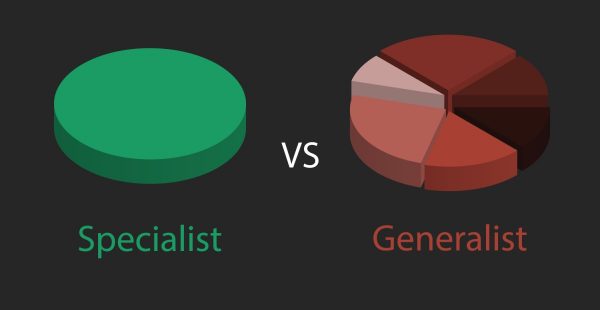Listed advice companies masking indifferent financial performance

The Financial Newswire analysis team has looked at the latest financial reports of Australia’s listed financial planning providers and found that spin is often masking harsh reality.
Charlie Munger famously once said “I think that, every time you see the term EBITDA, you should substitute the words “bullsh*t earnings.”
Looking at the half year results for the various listed advice companies we can include the word “adjusted” in this reference to “bullsh*t earnings”. Various companies have “adjusted” for a lot of things to mask what has been poor performance. The words “transformation”, “strategy” and “challenging environment” have been used more than once by these companies. They are trying to hide what is in plain sight – they are sub-scale and need to merge or be acquired to unlock shareholder value.
Ignoring EBITDA, and adjusted earnings, there is one number that counts and that is NPAT attributable to shareholders.
| Half Year
31 December 2022 |
CentrePoint
(CAF) |
Clime (CIW) | CountPlus (CUP) | Diverger (DVR) | Sequoia (SEQ) | WT Financial (WTL) |
| 12 mth share price | -4% | -26% | -28% | -11% | -32% | +17% |
| Market Cap | $47.3M | $31.2M | $59.5M | $35.4M | $64.8M | $31.7M |
| NPAT to owners | $3.029M | $0.236M | ($0.112M) | $1.221M | $0.630M | $2.285M |
| NPAT YoY | +505% | -47% | -103% | -22% | -76% | +104% |
Of the listed entities only CountPlus recorded a loss for the first half, regardless of the moves by the new CEO Hugh Humphrey to impair the value of Wealth Axis the trading performance was poor with operating profit down 51% on the back of higher wages and overheads. The share price remains under pressure even after the Board initiated a buy-back six months ago and there has been no meaningful acquisitions or growth. In an analyst report by E&P it was mooted CountPlus is now vulnerable to takeover with the CBA announcing to the market on several occasions it is a seller of its 36% stake.
Clime just squeezed out a profit after its operating profit fell by 85% to $42,171 and it was fortunate not to lose money after booking gains on investments. The previous market updates pointing to growth in adviser numbers and overall growth strategies have not eventuated.
CentrePoint has benefited from the acquisition of Matrix but is still behind the mooted merger benefits put to the market on acquisition, as with these things they always take more time and cost more money than planned. WT Financial had some wins from the recent acquisition of Sentry and Synchron.
With HUB a significant holder of Diverger, CBA a significant holder of CountPlus, and Clearview and Thorney key players at CentrePoint it is only a matter of time before something happens to one of these players to unlock shareholder value.
It is still difficult to see a pathway to profitability for Insignia and AMP in their own advice businesses.
Looking at the larger private players accounts lodged with ASIC we can see that for the YE2022 Fortnum achieved NPAT attributable to owners of $286,454 an improvement on the prior year loss of ($821,235) with things improving since raising just over $1.0M from shareholders in the previous year.
In recent times AZ Next Generation Advisory has lodged accounts with ASIC for a 31 December 2021 year end. The business shows a doubling of NPAT to owners of $8.668M up from $4.427M the previous period on the back of revenue of $116.77M. Some $50M of debt against a $60M limit is being carried, secured by a standby letter of credit from the Italian parent company. When we look at the goodwill at cost and the carrying value of customer relationships acquired we can see some $292.780M has been spent over the years building this business. With the profit achieved this represents a circa 3% return on goodwill acquired (after amortisation).
The numbers speak for themselves, as Financial Newswire has been writing for some time, there is a need for significant consolidation to take place in this space.











The primary reason most dealer groups exist is to generate business for inhouse products. They are intended as a distribution expense, not a profit making venture in their own right. The financial success of dealer groups can only be meaningfully assessed in conjunction with the profitability they generate for the owner’s inhouse products, which are often held under another entity.
How good is that Charlie Munger comment 🙂
The man thankfully does not suffer the rubbish of PC talk. Awesome !!!
It does not surprise me that there are a number of AFSLs who are not profitable
Once upon a time in the early 2000’s I had my own risk-only AFSL. I was the only adviser. It probably cost around 25 K per annum in accountancy fees, audit fees, annual compliance checks and PI, just to run the licence. For a short period I had a second adviser and that was a total disaster. Hypothetically, would I do it again – probably yes, if I stuck to risk only and not investment advice, and I was the sole adviser, in charge of my own compliance.
I can’t speak to efficiencies of amalgamating larger AFSLs, but one thing I do know, and the evidence is clearly there if you look, that in a perfect world ASIC would prefer to only license around 100 AFSLs. Their ideology is that a small number of AFSL’s are easy to control and manage, because you can always threaten to impose an Enforceable Undertaking. Now I suspect now ASIC prefer to litigate first, particularly as they now have that wonderful device that is the ASIC advisor Levy
In 1999, ASIC put a three month ban on Westpac’s advisers from providing advice and selling products, because Westpac had the temerity to train its advisers to tell prospective clients that Westpac advisers were paid only by “salary”, not commission. It was all BS, but they made the mistake of putting it in writing, and. ASIC, who had received complaints of Westpac misrepresentation from self-employed advisers who were remunerated only on commission, was forced to act.
ASIC put Westpac advisers out of business, and you can guarantee that hurt. So a situation where there is, say, only 150 AFSLs, and no small one-man bands, is ideal for the ASIC style of ” heads on poles” thinking. A three months enforceable undertaking today would kill most AFSLs, regardless of size
So, unless prospective AFSLs can find a sugar daddy somewhere, amalgamation may not be as advantageous as it is suggested, because the temptation will always be there for the regulator to swing a heavy punch for minor offences. Overburdening compliance, multiplied by the increasing number of advisers in a licence, is not really a recipe for more profit. And the QAR will not fix that problem, as I read the tea leaves
Mike, as a keen observer of AZNGA and its journey I would point out the fact that AZNGA’s cash profit after tax was $22m in 2021 and will be double that in 2023. Statutory NPAT is severely impacted by amortisation when you have an M & A strategy.